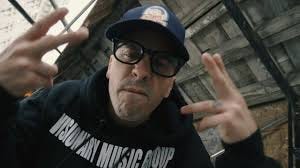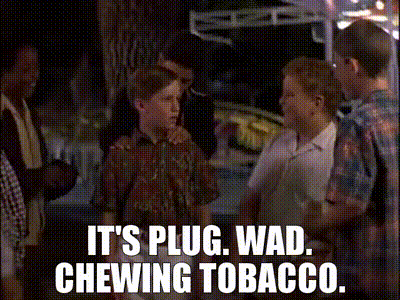Legends never die, FOR-EV-ER, and of course, You’re killing me, Smalls!
All are phrases entrenched in the Millennial lexicon courtesy of the film The Sandlot — and if you were born in the ‘80s or ‘90s and didn’t know those lines before reading the preceding, consider me more incredulous than Hamilton upon discovering Smalls never heard of the Great Bambino.
The Sandlot debuted in theaters in spring 1993, coinciding with the start of the baseball season. I was 10 years old at the time, squarely in the film’s target audience. And let me tell you, it hit every chord to appeal to that demographic.
My fond memories of The Sandlot could be chalked up to the nostalgia inherent with being the perfect age for its release. After all, there’s a sort of kitsch to referencing The Sandlot these days, like rapper Logic embracing a meme that said he looks like the characters Squints by casting actor Chauncey Leopardi in a music video.
Patrick Renna recently appeared in a hilarious Instagram performing interpretive dance routines to networks’ various NFL theme songs. It’s a terrific clip made all the more charming by the fact it can be universally described Check out this video with the kid from The Sandlot and people will likely know who you mean.
That speaks to The Sandlot’s resonance, as Renna appeared in a variety of movies in the same era like the Pauley Shore vehicle Son in Law and another sports-themed movie, The Big Green. It isn’t those roles that made Renna as much of a ‘90s icon as Crystal Pepsi or the Sega Genesis.
Indeed, The Sandlot’s cultural staying power suggests more than simple nostalgia fueling its resilience. Its timelessness that plenty of movies of its time and genre lacked.
And those timeless qualities were confirmed for me this weekend upon a rewatch with my oldest son, who turns 10 at the end of the month. Aside from me having to explain more than once that no, life was not like that in the 1990s — that The Sandlot was produced in my childhood decade, but depicted the 1960s seemed to be a mind-blowing proposition for someone who views 2017 as “a long time ago” — the movie struck the same notes for my son as it did for me.
The Sandlot’s primary theme of overcoming insecurity and building friendships are universal. The Sandlot was hardly the first or last children’s movie to touch on these themes, which are honestly pretty ubiquitous in the genre, but it did so in a way that feels accessible to the target audience.
In other words, it’s a movie that presents a child’s perspective through a childlike lens. The friends who congregate to play baseball in the sandlot talk like kids, act like kids and view the world in the way kids do; that is, the things that seem frivolous to adults preoccupied with mortgages and health insurance are actually of the highest stakes to them.
Saving a pilfered, autographed baseball from a mysterious neighbor’s backyard, beating the mouthy kids from the other side of town in a baseball game, getting your first kiss: These are as important to an adolescent as nuclear proliferation is to world leaders, and The Sandlot gets that point across.
A Christmas Story has become such a seminal classic for this same reason. For the sake of brevity, I’ll assume you, dear readers, knows the basic backstory that A Christmas Story flopped upon its theatrical release in 1983 but gained life through the TBS 24-hour marathon in the early 2000s.
While TBS certainly helped A Christmas Story gain cult-classic status, I don’t think it’s as simple as sticking a movie on the air for 24 hours on Christmas and it catching on. For example, the same approach with the dreadful Vince Vaughn vehicle Fred Claus wouldn’t work.
I believe the same goes for a more fondly remembered Christmas film — enough so that it got a limited-series sequel on Disney+ last year — with The Santa Clause. I watched both with my kids and A Christmas Story connected with me where The Santa Clause failed to, because the latter is told from the perspective of a cocaine trafficker turned informant turned guy who makes self-righteous and offensive Holocaust comments err, a self-absorbed advertising executive and bad father.
It isn’t a storyline meant for children, and the lead kid is reduced to being a one-dimensional accessory to the adult’s character arc. A common theme of ‘90s movies glaringly evident today is how often children are written to be either flat, phony, or totally obnoxious like the “Turkey Kid” from Jurassic Park, a film released the same year as The Sandlot.
Perhaps the prevalance of this trope throughout our childhood is why so many Millennials struggle with anxiety as adults. But I digress.
Both A Christmas Story and The Sandlot tell a kid’s story the way a kid would tell it, with the characters showing genuine emotions and nuance. A Christmas Story has Ralphie saying the Queen-Mother of Dirty Words, getting into a fight with neighborhood bully Scut Farkus and fearfully abandoning Flick after he gets his tongue stuck to the frozen flagpole.
In The Sandlot, Squints’ scheme to get a kiss from community pool lifeguard Wendy Peffercorn is underhanded — and provided a teachable moment as a parent — but isn’t presented in the movie as something admirable. Likewise, the gang getting sick on a carnival ride after dipping chewing tobacco is played up for laughs but not glorified.
But these are realistic foibles and tribulations of adolescence that give the characters realism. They make mistakes, but it’s ultimately a group of well-intentioned kids who accept and support one another.
And, to that end, they’re easy to root for.
My son was truly invested in the sandlot gang beating the organized team from across, and he was especially invested in the quest to reclaim Smalls’ stepfather’s lost Babe Ruth baseball.
He was on the edge of his seat as The Beast chased Benny “The Jet” Rodriguez through town during the film’s climax, and teared up as Benny and Smalls lifted the fallen fence off of the gentle giant dog.
He also watched the Fourth of July pick-up baseball game with the same awe I remember feeling the first time I watched The Sandlot.
This scene, perhaps more than any other in the film, encapsulates the feeling of childlike wonder one feels in summertime, surrounded by friends and enjoying a shared pastime; a sense that anything is possible and our dreams aren’t so unrealistic.
Watching The Sandlot as a boy of about the same age as its characters provided me laughs and memorable quotes. Watching it again as a dad with my own son of the same age gave me a much deeper appreciation of what it conveys about childhood, friendship, and believing in your own ability to become legendary.









I just watched the Sandlot with my kids a few weeks ago, and it really hit with them. I hadn't thought of it this way, but "a kid's story the way kids would tell it" is a perfect description.